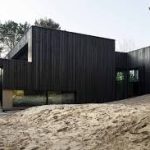Your roof is your home’s first line of defense against the elements, yet it’s often overlooked until a serious issue arises. While routine maintenance can extend a roof’s lifespan, there comes a time when repairs are no longer enough. Whether you’re experiencing chronic leaks, noticing increased energy bills, or simply dealing with an aging structure, it’s important to understand the signs that indicate your roof may need replacement. Ignoring these issues can lead to costly damage to your roofing system and the integrity of your entire home. Here are some of the most common and crucial reasons why replacing your roof might be the best decision you can make.
Age and Wear
Even the best-installed roofs begin to show signs of aging and wear. Materials like asphalt shingles generally last about 20 to 30 years before they start to deteriorate, often curling, cracking, or losing granules. These aging symptoms may seem minor at first, but can lead to larger issues like leaks or structural damage. When your roof is nearing the end of its expected lifespan, it’s smart to have it inspected by a reliable roofing contractor, especially if you notice visible damage or sagging areas. A professional can assess whether your roof still has a few good years or if replacement is the safer option.
Persistent Leaks and Water Damage
Water intrusion is one of the most dangerous threats to a home’s structure, and frequent leaks are a strong indicator that your roof might need more than just patching. When water seeps in, it can damage ceilings, walls, insulation, and even electrical systems. Stains on the ceiling, mold growth, or a musty odor inside the house often point to hidden water damage. While minor leaks can sometimes be repaired, chronic or widespread water penetration suggests that the roof system is failing and should be replaced entirely to prevent ongoing damage and health hazards.
Moss, Algae, and Plant Growth
While moss or algae might seem like a cosmetic issue, they can cause significant damage if left unaddressed. Moss retains moisture and can lead to the deterioration of shingles, especially in shady or humid environments. Similarly, algae can cause black streaks and degrade the appearance of your roof while contributing to material breakdown. Plant growth is a sign that moisture is being trapped, which can weaken roofing materials over time. In severe cases, especially when combined with other age-related issues, roof replacement becomes the most viable solution to restore functionality and appearance.
Shingle Damage and Deterioration
Shingles are designed to protect your home from the sun, wind, and rain, but they can deteriorate over time. Signs of shingle failure include curling edges, cracking, bald spots where granules have worn off, or shingles that have gone missing altogether. Severe weather conditions, like hailstorms or high winds, can accelerate this wear. A damaged shingle system can compromise your roof’s ability to repel water effectively, leading to further complications. If a large portion of your roof shows this type of deterioration, replacement is usually more cost-effective than repeated patching.
You might also like: A fresh take that complements what you just read.
Sagging or Structural Problems
A sagging roof is a serious issue that often indicates structural damage beneath the surface, possibly due to long-term water infiltration or inadequate support. This might appear as a dip in the roofline or an uneven surface and can suggest rotting decking or weakened rafters. Structural issues can jeopardize the safety of your entire home and should be addressed immediately. Replacing the roof allows professionals to repair or reinforce the underlying structure, ensuring your home remains safe and stable for years to come.
Increased Energy Bills
If your heating or cooling bills have spiked without any noticeable changes in your energy usage habits, your roof may be the underlying issue. An aging or damaged roof often suffers from deteriorated insulation and inadequate ventilation, which affect your home’s ability to regulate temperature efficiently. This forces your HVAC system to work harder than necessary, leading to higher energy consumption and increased utility costs. During winter, heat escapes through weakened roofing materials, while in summer, excess heat enters the home through poor ventilation. Replacing your roof with energy-efficient materials and ensuring proper airflow can drastically reduce energy waste and enhance year-round indoor comfort.
Replacing a roof is a major investment, but sometimes it’s the only way to preserve the safety, efficiency, and value of your home. From aging materials and structural concerns to environmental wear and energy inefficiency, the reasons to consider a full roof replacement are numerous and varied. By staying informed and vigilant, you can identify these signs early and make timely decisions that protect your property in the long run.
If you enjoyed this post, you’ll love what’s featured on 2A Magazine.







